Menus
- Deeper review
- Versoftchopperung stopped at nothing
- More Harley than Harley-Davidson
- Displacement War – 1500, 1600, 1800 …
- New soft choppers on the way
- Video: Honda Rebel (2017) in the test
- history
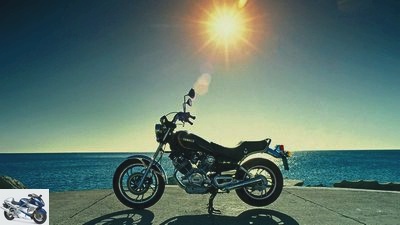
duke

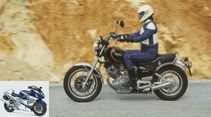
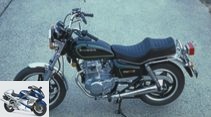
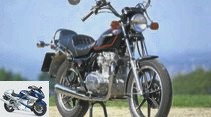
44 photos
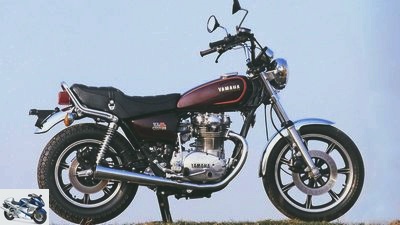
Reuter
1/44
1980 Yamaha XS 650 US Custom.
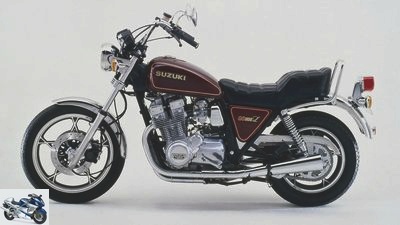
2/44
1980 Suzuki GSX 1100 L.
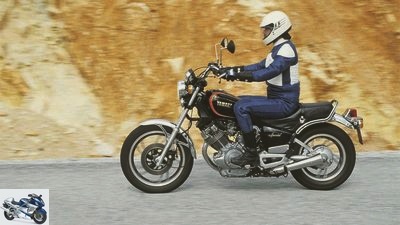
Frank Herzog
3/44
1981 Yamaha XV 750.
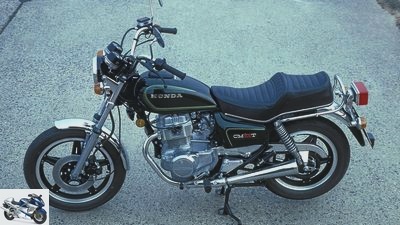
4/44
1980 Honda CM 400 T.
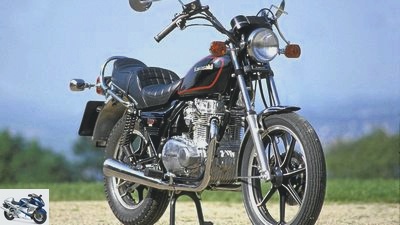
Frank Herzog
5/44
1982 Kawasaki Z 440 LTD.
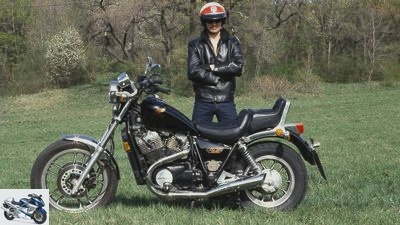
6/44
1983 Honda VT 750 C.
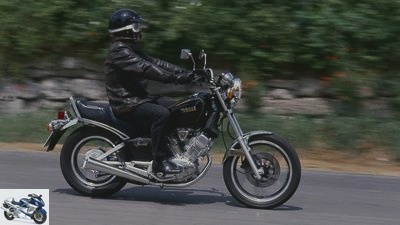
W. Falk
7/44
1984 Yamaha XV 500 SE.
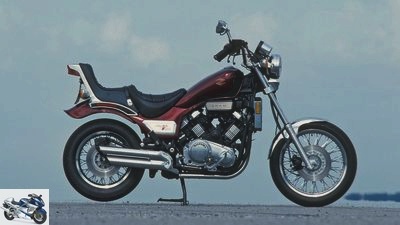
Moesch
8/44
1985 Suzuki GV 1200 Madura.
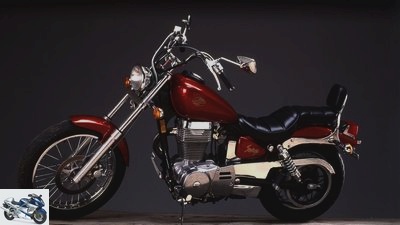
9/44
1986 Suzuki LS 650 Savage.

10/44
1987 Suzuki VX 1400 Intruder.
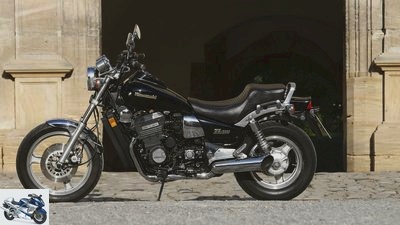
11/44
1987 Kawasaki ZL 1000 Eliminator.

Stefan Wolf
12/44
1988 Yamaha XV 535 Virago.
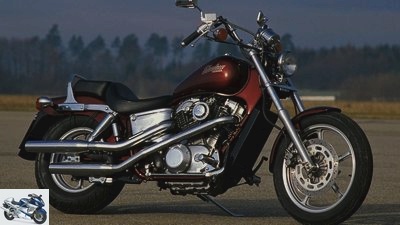
13/44
1988 Honda VT 1100 C..
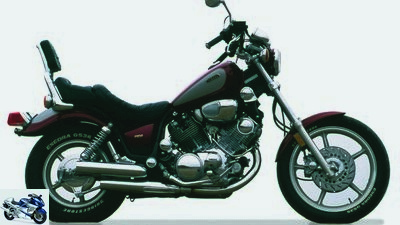
14/44
1989 Yamaha XV 1100.
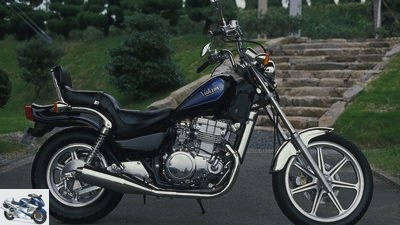
15/44
1990 Kawasaki EN 500 Vulcan.
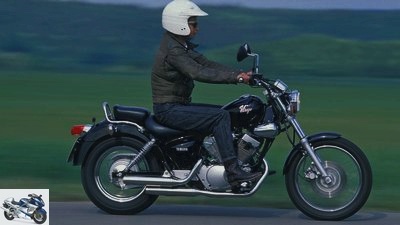
gad
16/44
1991 Yamaha XV 250.
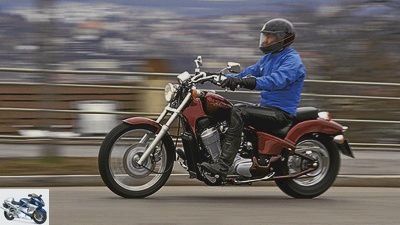
Frank Herzog
17/44
1992 Honda VT 600 C Shadow.
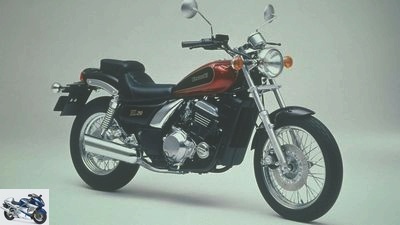
Kawasaki
18/44
1993 Kawasaki EL 250 E..
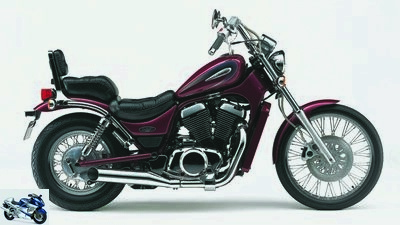
Suzuki
19/44
1994 Suzuki VS 800.
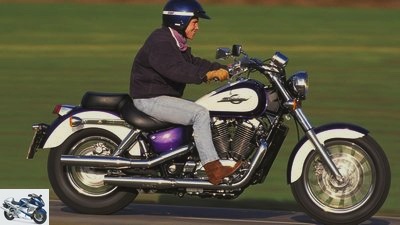
Hartmann
20/44
1995 Honda VT 1100 C2 ACE.
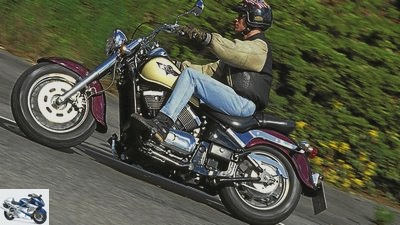
21/44
1996 Kawasaki VN 800 Classic.

22/44
1997 Yamaha Royal Star Tour Classic.
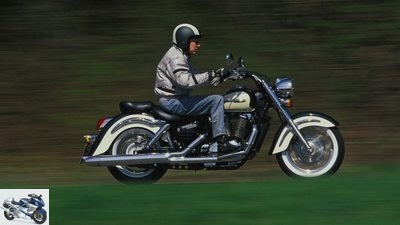
Frank Herzog
23/44
1998 Honda VT 1100 C3 Shadow Aero.
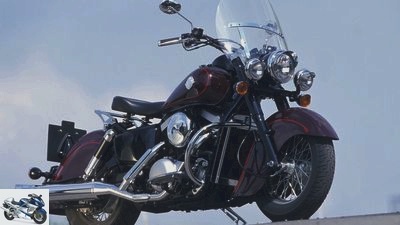
r-photography.info
24/44
1999 Kawasaki VN 1500 Drifter.
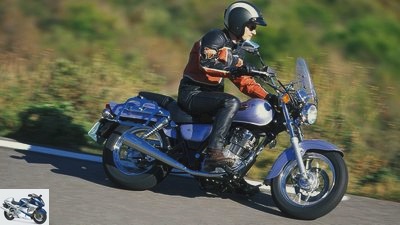
factstudio.de
25/44
2000 Suzuki GZ 250 Marauder.

26/44
2001 Honda VTX 1800.
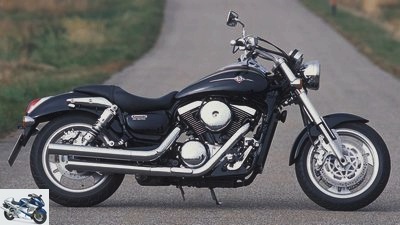
factstudio.de
27/44
2002 Kawasaki VN 1500 Mean Streak.
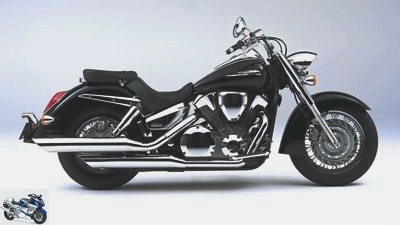
28/44
2003 Honda VTX 1300 S..
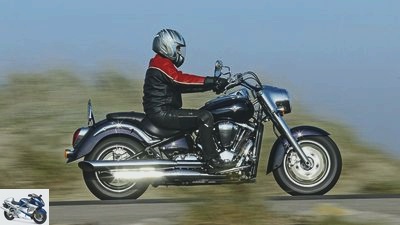
29/44
2004 Kawasaki VN 2000.
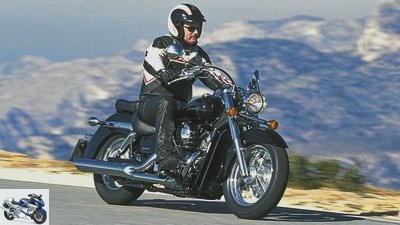
30/44
2004 Honda Shadow 750.
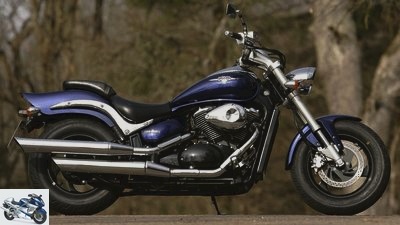
r-photography.info
31/44
2005 Suzuki Intruder M 800.
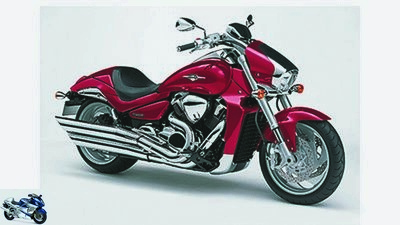
32/44
2006 Suzuki Intruder M 1800 R.
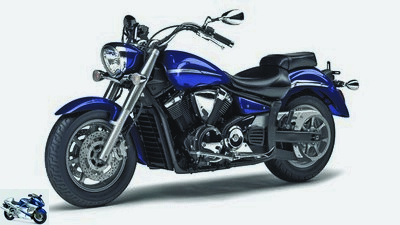
33/44
2007 Honda VT 750 Shadow Spirit.

34/44
2008 Honda DN-01.
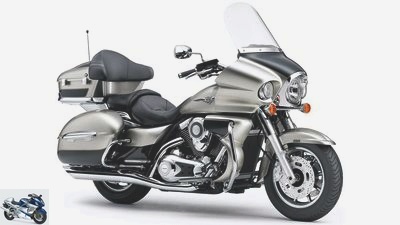
Kawasaki
35/44
2009 Kawasaki VN 1700 Voyager.
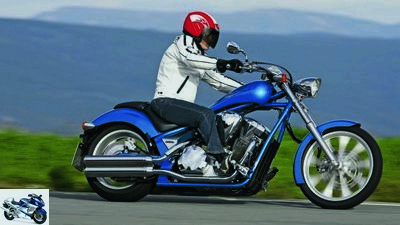
factstudio.de
36/44
2010 Honda VT 1300 CX.

37/44
2011 Honda VT 750 S..
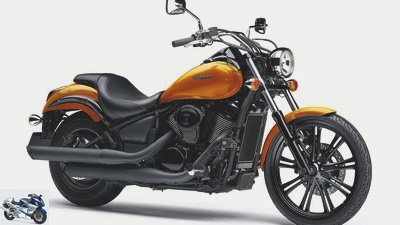
Kawasaki
38/44
2012 Kawasaki VN 900 Classic SE.
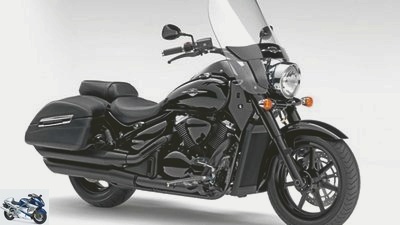
Suzuki
39/44
2013 Suzuki Intruder C 1500 T.
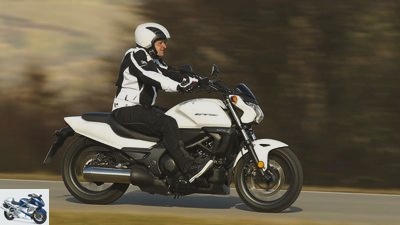
bilski-fotografie.de
40/44
2014 Honda CTX 700 N.
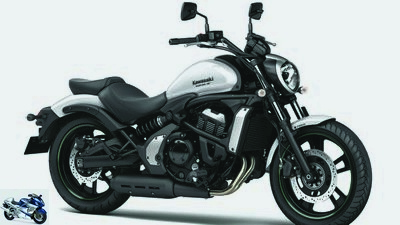
Kawasaki
41/44
2015 Kawasaki Vulcan S..

42/44
2016 Honda Gold Wing F6C.
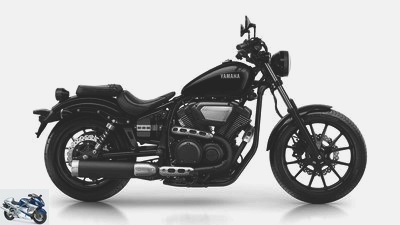
43/44
2016 Yamaha XV 950.

Frank Herzog
44/44
Picture gallery: History of Japan Chopper.
Rise and Fall of the Japan Chopper
Deeper review
Once they were trendy, today they are as out of fashion as cola red, foxtail and armpit hair – soft choppers and cruisers from the land of the rising sun are a multi-faceted, at times surprisingly successful phenomenon. Euro 4 practically sets the genre to the beginning – time for a deeper look back.
S.o We, and perhaps you too, are now fed up with the topic of European exhaust and noise regulations – in the course of the new standard, interesting shifts in the motorized two-wheeler market occur every few years. Former burners, which over the years have shrunk to glower and then to mica, but have been dragged on again and again – after all, all segments want to be served – are thrown out. That’s how it goes with many large four-cylinder engines, that’s how it was with the six hundred super sports cars. And this is how it will now be for the choppers and cruisers from Japan.
Buy complete article
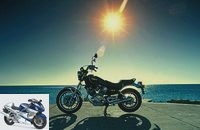
Rise and Fall of the Japan Chopper
Deeper review
Easy Rider was already an old camel
Why? Intruder-Suzukis, Vulcan-Kawasakis and Midnight Star-Yamahas are missing the compulsory ABS. And the whole clan of free-riders, wide-riders, long forks, high-handlebars and low-seat benchers from the Far East are lacking sales figures. Of course, ABS could easily be retrofitted, and the capacity giants, which are already completely under-challenged in terms of performance, could certainly be cleaned up to some extent without too much effort. Alone, it’s not worth it. Everything that looks like long-stroke, relaxed comfort and does not come from Milwaukee, or at least Springfield, has been bogging its tires flat in the showrooms for some time. “Softchopper” and “Japancruiser” – be careful if you throw these terms around today, someone could get hurt.
But that was not always the case, because once, many, many moons ago, they were very popular. At the end of the 1970s, motorcycling was popular as a leisure activity, and the four great Japanese ruled the German market with modern in-line two- and four-cylinder engines that would be called naked bikes today and which at the time were simply motorcycles. Then something happened. Some blame it on the cult film “Easy Rider”, which brought the “Chopper” based on the American model and the associated, supposedly liberal, hash-steaming attitude towards life into people’s consciousness. But at this point it was already an old camel. Maybe there was something in the drinking water at the time? Contemporary witnesses can certainly contribute to answering this question.
Versoftchopperung stopped at nothing
Whatever the reason, the chopper wave lapped and the big four Japanese surfed it busily. Starting with Yamaha, which back then was already synonymous with innovation. The good XS 650 became the Special, then the U.S. Custom. Nomen est omen. The props that were common at the time (plush step bench, ergonomically questionable high handlebars, thick 16-inch rear wheel, drip tank and lots of chrome) found their way to pretty much every Yamaha, Suzuki, Kawasaki and Honda within a very short time. Small and medium-sized CM-Ts, Custom-CX and CBs, LTD-Zetten, GS (X) -Suzukis as L-Version – the Versoftchopperung crawled up the displacement ladder, stopped at nothing and in places sprouted remarkable flowers.
Example? Suzuki GSX 1100 L, a state-of-the-art sixteen-valve inline four-cylinder flagship with an unbelievable 100 hp at the time, garnished with a playful drop tank, step sofa, wild armpit aerator antler, 16-inch model and a shamelessly suggested sissy bar. “A motorcycle for men’s riders who like to ride a top model without feeling too grueling at speed, and for whom knowledge of the ingenious top technology means more than the physical immersion in it”, the MOTORRAD catalog from 1980 notes meaningful.
But as easy as it is today to amuse oneself with the fashion of the time – how successful the manufacturers were in selling choppy motorcycles as set-pieces is shown in the following years, in which practically every model has a custom / GR / L / GN / LTD / Special variant was put aside. Even water-cooled four-valve V4s pushed Techno-Chopper service at Honda and Suzuki.
But it is clear that only the Vau-Zwei is good for real American feelings, preferably with a decent displacement. As a result, Helmut Kohl was Chancellor for the first time, via the detour from the USA Yamaha XV 750 Special and XV 1000 SE Midnight Special to us. Admittedly, typically Japanese, with a technically very advantageous, but very stylistic, cylinder spread of 90 degrees. And overhead camshaft, cantilever swing arm and cardan shaft. Not quite soft anymore, but still not completely chopper. The golden draped XV Yamahas illustrate the greatest strength and at the same time the identity problem of the Japan chopper: When the Nippon technicians copied the company, they immediately ironed out the gross technical inadequacies of the Milwaukee iron with their own diligence. It’s just stupid if these form the core of the brand. And then at the end of the “American way of life” only look and ergonomics are left.
More Harley than Harley-Davidson
A Harley in Gut is no longer a real Harley. Especially at the time. According to reports, Harley-Davidsons were still a long way from the reliability and simplicity of today’s machines in the 80s and anything but polished motorcycles. Real Harleys were for freaks with real suffering with flaps. Genuine Japanese chopper equipment, on the other hand, was cheap, could do everything objectively better and thus appealed to a different clientele. One who, depending on your point of view, didn’t care about your image and for whom driving counted. Or one too poor, short, or old for a real Harley.
But back to the actual topic. Nippon’s experimental phase ends with the 1980s and Suzuki’s 750 and 1400 VS intruders. Both of them copied the clean, clear design language from America in a completely unabashed manner stylistically, breaking with the ornate baroque design of previous attempts. The first real lowrider from Japan. Cool and minimalist. Just not in terms of displacement, where the air-cooled 1400 is the first to beat the US of A when it comes to firepower. More Harley than at Harley-Davidson for less, that fit right away. Now choppers from Japan, which can now also be called that, are being converted on a larger scale. Better copied well than badly made yourself. “Uns Trude” has been a success for many years.
Displacement War – 1500, 1600, 1800 …
The same and more applies to Yamaha’s 90s mega-seller XV 535 Virago, in contrast to rather bizarre phenomena such as Kawasaki’s early drag bikes ZL 600 and 1000 Eliminator. Low, easy to drive, inexpensive, makes a difference to the neighbors – no wonder that the 535-Virago has led the registration statistics for years and is still one of the kings of the population today. That the thick cylinders only pretend full displacement and that the Virago is derisively derided by “seasoned bikers” as a driving school and women’s motorcycle? Don’t blaspheme – what did your wife get her driver’s license for??
At the other end of the price scale, the displacement war raged towards the turn of the millennium, which Kawasaki had launched in 1988 with the chair-backed VN 15. The Intruder becomes the water-cooled LC 1500, Yamaha counters with 1600 Wild Star cubic, Honda counters with the sinewy VTX 1800. Ultimately, Kawasaki, who else, is bringing the displacement cup back to Akashi with the VN 2000 to this day – restraint was once upon a time. The trend is changing at the same time.
The chopper has been slacking for a long time, cruisers are popular. 16-inch front wheels with thick tires, sweeping fenders, even more chrome, running boards and away with the sissy bar – old Indians are now the model. Classic at Kawasaki, Marauder at Suzuki, Shadow ACE at Honda. Comfort and utility are important to the aging public, and the government should also be able to come along, maybe even on vacation. Logically, one turns to the cruiser, which, as is usual in the USA, straps on additional headlights, windshield and luggage and thus becomes a full dresser suitable for touring. But even this trend is short, at the turn of the millennium, the cozy ones run out of air.
In a final show of strength, the displacement giants defoliate, once again inspired by the company and their V-Rod thunder bolt, go to the gym and become power cruisers. Kawa Mean Streak, Honda VTX 1800, Suzuki M 1800 R and Yamaha XV 1700 Midnight Warrior drive more or less pleasantly and draw black lines on the drag strip. But nobody really looks at it anymore. In the course of the noughties, the wave finally ebbed. Harley-Davidsons have gotten much better over the years, the purchasing power has increased, and so many eventually went to the original after all. The fire chair, which, along with Coca-Cola and Rock’n’Roll, remained as a remnant of the American love of freedom after the war in Germany, on which Sonny Barger supplied the Kesey Revolution with LSD (so the story goes), somehow it will perceived as cooler than something the Hondas and Suzukis drew on the drawing board in the battle for market share. It doesn’t matter whether the folklore is true or not.
New soft choppers on the way
But with the right look, you can still see how far the Japan chopper wave has rolled into the country and what traces it has left behind. The sheer unbelievable variety alone is remarkable. No gap between 125 and 2000 cubic centimeters was left unoccupied: soft choppers, hard choppers, factory custom bikes, cruisers, power cruisers, full dressers, and finally excavators – nothing that did not exist. One, two, four, six cylinders, in line, as a Vau, as a boxer, air and water-cooled, two, three and four-valve, with chain, belt or cardan. A few of them are still around today. The VTs, the Intruders, the VNs and the Vulcans, XVSen, not to forget the F6er, are reminiscent of the past. Now Euro 4 lets them wander into the eternal hunting grounds. But the descendants are already ready. Kawasaki Vulcan S, Honda CTX 700 N and the new Rebel 500 are again very close to the original idea of the simple, inexpensive, honest Japanese soft chopper. The circle closes.
Video: Honda Rebel (2017) in the test
history
1980 Yamaha XS 650 US Custom
At first it was a shy splash, a lonely, small wave that swept across the pond a good ten years after “Easy Rider”. It all started in 1979 with the Yamaha XS 650 SE, which became known as U.S.A. in 1980. Custom slouched in the shop windows. What reads today like a list of ingredients from the motorcycle horror cabinet, were the chopper props used at the time, which transformed the venerable XS 650 into the first typical soft chopper of Japanese design: drop tank, fat step bench, stub exhaust, thick 16-inch rear wheel and a Buckhorn handlebar, which with its daring offset would also have fitted well on a Dutch bike. What at first seemed like a short-lived trend quickly drew circles through the model ranges of all Japanese manufacturers.
1981 Yamaha XV 750
The soft chopper wave was rolling in a mighty way, when Yamaha went all out a year later. The XV 750 with V2 for the soul came unexpectedly for friend and foe. With this, Yamaha was another big step ahead of the competition. In contrast to the competition, the Japanese abandoned the path of converting good street machines from the existing range to choppers. The XV was a completely new model, designed from the start as a chopper. With a cross-installed V2 one opted to emulate the Americans. With external oil lines and cooling fins, the short-stroke 75-degree V2, designed according to Japanese tradition, was served appetizingly. The cardan and cantilever swing arm formed the modernist counterpoint to the classic drive. In terms of handlebar offset, however, nothing had changed for the better (note the driver’s sitting posture).
1987 Suzuki VX 1400 Intruder
Rum. That had sat. While Harley could only smile tiredly at the Japanese attempts to poach in their territory, Suzuki now sent serious competition into the race after the Intruder 750 with the fat “Trude”. Big displacement, bold print and pure chopper styling were no longer distinctive trademarks of the Milwaukee irons. In addition, the Suzuki was quite up to date. Cardan drive, cleverly hidden water cooling, the 1400s was a child of the modern age. But concealed this so cleverly behind the classic long fork look like no other Japanese chopper. In proper style with lots of chrome, plush step bench, narrow front and fat rear wheel. With short, chopped exhaust bags, pretty spoked wheels and a small lamp, it offered the promise of Harley feeling and reliability at a moderate price.
1988 Yamaha XV 535 Virago
I did my driving school on one of these, ”is the sentence that the XV 535 gets to hear most often. Low, agile, uncomplicated. In addition, robust and low-maintenance with an inconspicuous cardan. That made the XV 535 the ultimate entry-level chopper. Even if it was ridiculed by many, it had a lot to offer besides the low seat height. The cheeky curved exhaust system and an elastic V2, for example. But it wasn’t a machine for the big show. Awesome sound, fat punch, even fat slippers – she left that to others. If you were looking for a reliable companion for stress-free and carefree gliding, you were at the right place with her and her pretty V2. Qualities that not only convinced driving schools, but ultimately also around 57,000 buyers.
2004 Kawasaki VN 2000
They actually did everything right, the boys from Akashi. Or so they thought. True to the motto that bigger is always better and, above all, displacement cannot be replaced by anything except more displacement, her top model, although without a suitcase or disguise, drove tightly towards the 400 kilo mark. In return, their 2053 cm³ drive easily skipped the two-liter mark and is still considered the largest V2 ever to be built in series. But at least in Germany, customers refused. Only about 400 pieces were sold. That makes the UN interesting today for those who are tired of the Harley monotony. Incidentally, for performance enthusiasts too, because the Americans still do not manage 104 hp and 177 Nm. The chassis and brakes were up to the performance, but the sheer size of the hum made the whole guy take on.
2016 Honda Gold Wing F6C
The admission of being addicted to six is usually not suitable for raising one’s social status in one’s personal environment. Unless the object of obsession is two-wheeled. There aren’t many ways to sewer, and the least known is the quasi-naked sister of the travel steamer Gold Wing. Both have the grandiose, powerful and cultivated six-cylinder boxer in common, in which the starting process and the associated aural background is highly addictive. That doesn’t get any less with driving, and thanks to around 80 kilograms less weight and larger wheels, it is almost manageable for a representative of this genre. Like the drive, the star cruiser optics protrudes from the usual cruiser monotony. It’s a shame she has to go.
Related articles
-
Suzuki Intruder – Final: 25 Years of Japan Chopper
archive 11 photos archive 1/11 The Intruder has been around for a quarter of a century and was the first Japanese chopper to try to break the hegemony of…
-
Comparison test middle class chopper
Comparison test, Honda VT 600 C, Kawasaki EN 500, Suzuki LS 650, Yamaha XV 535 Virago mid-range chopper When is a man a man? Four mature gentlemen …
-
Comparison test, Harley-Davidson Sportster 883, Kawasaki VN 800, Suzuki VS 800 Intruder, Yamaha XV 750 Virago Chopper Somewhere between the slender …
-
Comparison test of naked bikes from Japan
Art 15 pictures Art 1/15 Art 2/15 Art 3/15 Art 4/15 Art 5/15 Art 6/15 Art 7/15 Art 8/15 Art 9/15 Art 10/15 …
-
News from Japan Speculation In autumn there will be motorcycle innovations. Reliable information, hard facts. The time before, the time of dreams and …
-
Honda CBR 400 R (2020): Revised entry-level athlete for Japan
Honda. 5 photos Honda. 1/5 Honda has presented a new model with the CBR 400 R.. Honda. 2/5 However, the entry-level athlete is only offered in Japan….
-
Sven Wedemeyer Scene: Customs scene in Japan Big in Japan Content of On the other side of our planet, the world is not upside down. But she is different….
-
Kawasaki ZX-6R KRT Edition: 2021 color variant unveiled in Japan
Kawasaki 7 pictures Kawasaki 1/7 Kawasaki presented the new colors for the 2021 vintage in Japan. Kawasaki 2/7 The ZX-6R will be the KRT Edition …
-
Motorcycles and engine concepts from the 1980s
Archive 11 Pictures Archive 1/11 25 years ago a lot changed in the motorcycle industry. The development was more innovative than ever before. The…
-
Honda VTR 1000 F (VT: Japan versus Europe)
Honda VTR 1000 F (VT: Japan versus Europe) Japan versus Europe: two-cylinder Where character counts twice: sporty two-cylinder. Aprilia SL 1000 Falco …